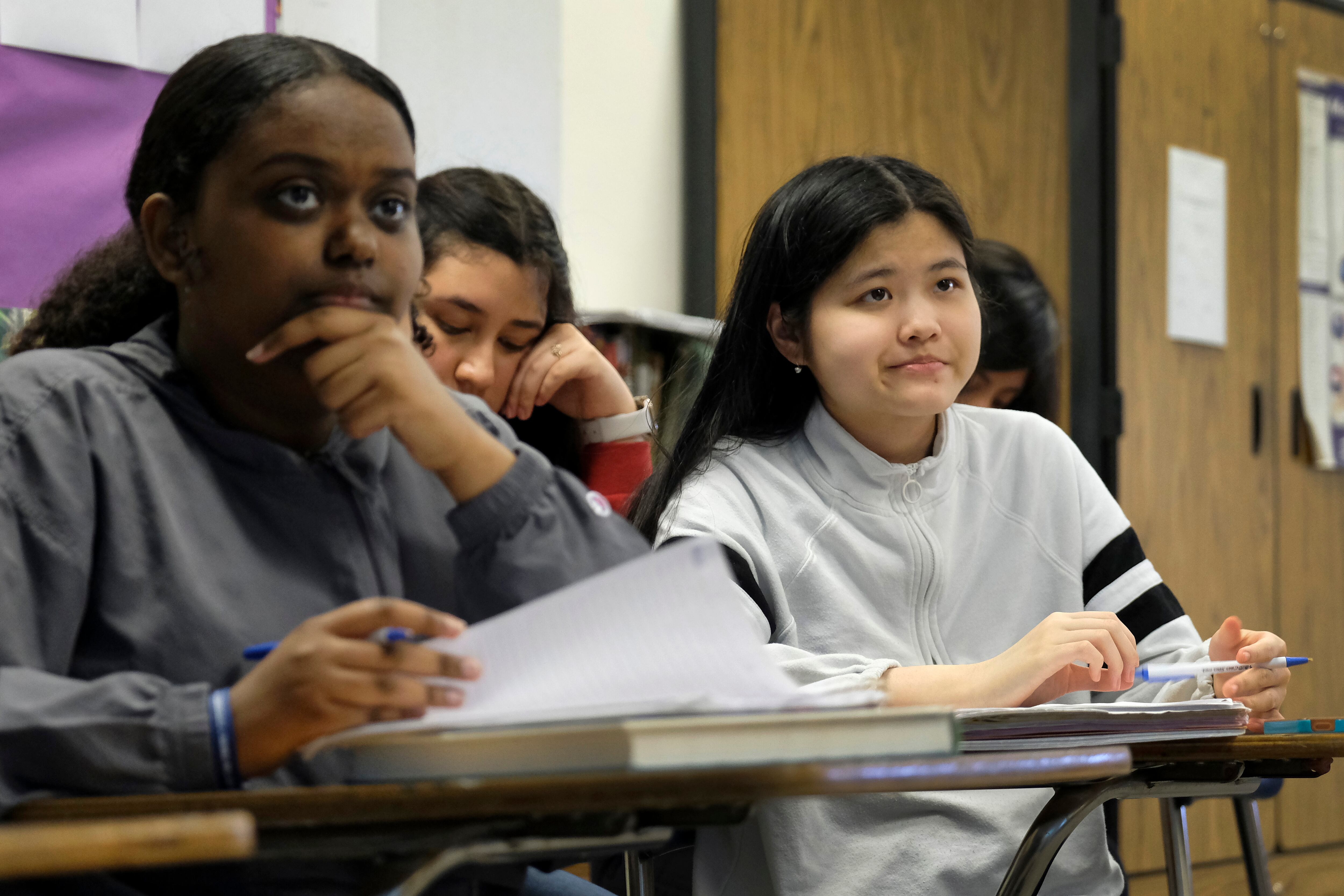America’s most widely used school rating system is overhauling its approach with a series of changes that will weaken the link between race, poverty, and school scores.
The website GreatSchools is rolling out the changes nationwide Thursday after introducing them for schools in California and Michigan in August. They are part of an effort by the site to make its ratings better reflect how much schools help students learn, rather than things like students’ prior academic achievement and poverty levels that schools don’t control.
“The new system is better because there is more of a focus on learning and growth and what’s actually happening in schools,” GreatSchools CEO Jon Deane said. “We know that’s more important.”
The move comes amid growing scrutiny of GreatSchools’ system of judging schools, including a Chalkbeat investigation that found that its ratings effectively steered families away from schools serving more Black, Hispanic, and low-income students.
GreatSchools says the average school will see only a modest score change. Still, the shifts mean that the tens of millions of people who find the ratings on real estate sites like Zillow will now see a different measure of school quality, potentially affecting enrollment patterns that contribute to school segregation.
“It’s a step in the right direction when you move away from a system of evaluation that privileges the advantages that children bring with them to schools,” said Francis Pearman, an education professor at Stanford. “Overall, this is a positive move.”
GreatSchools was started in 1996, and real estate websites have made its 1-10 school ratings ubiquitous and influential in the decades since. By compiling and interpreting information on schools that otherwise isn’t easily digestible, GreatSchools’ own site has also become popular with parents.
For years, though, some have worried that its ratings exacerbate segregation in housing and schooling. One study found that when GreatSchools began rating schools in a community between 2006 and 2015, housing segregation increased as white and affluent families moved into areas with higher-rated schools.
GreatSchools adjusted its ratings system in 2017. But Chalkbeat’s analysis last year found that strikingly few schools serving mostly low-income, Black, or Hispanic students scored well — even if their students were making significant progress each year. That’s a reflection of how those ratings have been constructed: with a heavy emphasis on overall test scores.
GreatSchools’ new approach puts more weight on growth, or how students progress over time. It has also increased the weight of its “equity” measure, which looks specifically at how low-income students and students of color perform, and incorporated growth into that metric, too.
For some schools, like Knapp Elementary in Denver, those shifts will make a real difference. The school serves mostly low-income Hispanic students — 75% are English learners — and its overall test scores aren’t high. But students there make substantial progress from year to year.
Under GreatSchools’ old system, Knapp earned a 4 out of 10. Under the new approach, it scores a 6.
Shane Knight, Knapp’s principal, welcomes the shift. “If we’re running a race and we’re starting out far behind, but we’re closing the gap, I think that bodes well for students who attend Knapp, and recognizes the efforts and expertise that my teachers are putting forth,” he said.
Orville Jackson, GreatSchools’ vice president for data strategy, says the changes mean high-poverty schools serving their students well “are getting credit for that hard work.”
Still, many schools won’t see their ratings shift at all. GreatSchools says that the average high-poverty school will see an increase of two-tenths of a point, though some will see declines and others will see larger bumps. (Affluent schools, on average, will decline by the same amount.)
The changes also won’t be uniform nationwide. About a dozen states, including California, don’t make growth data available at all. (GreatSchools’ workaround is to approximate it, but Chalkbeat has found that the substitute is strongly connected to student race and poverty. That means school ratings in those states are unlikely to change much.)
High school ratings are also unlikely to shift much. Since students generally aren’t tested annually, growth data doesn’t exist.
But the new ratings could make some difference in how parents choose schools and homes.
George Mason education professor David Houston has found that white, affluent parents are more open to sending their child to a racially diverse school when presented with data on test score growth, as opposed to simply overall performance or student demographics.
“Do I think this will be the beginning of a radical change of rapid school integration? No,” Houston said of the GreatSchools changes. “But could this have a positive effect on the margins? Plausibly.”
As it makes these changes, GreatSchools is also facing an unprecedented challenge. State tests, which provide the data for GreatSchools’ ratings, were canceled last school year. The Trump administration has said it will likely require these tests this year, but some school officials are hoping that will change if Joe Biden is elected president.
Even if tests resume, one year of data will be missing. That puts GreatSchools in a tough spot, as its ratings may seem outdated and it will be difficult to calculate new growth scores. Two years of missing data would make things even more complicated.
“We are considering a lot of different options,” said Deane.
One thing the new rating system won’t change: Boiling a school down to a numerical rating is inherently fraught.
“What makes a school great isn’t just in the test scores; it’s in the intangibles or unmeasurable things that you feel when you’re in the building, but you can’t necessarily quantify,” Knight, the school principal, said. “To their credit, they’re trying to use the information they have to help parents make informed choices, and I value that.”





